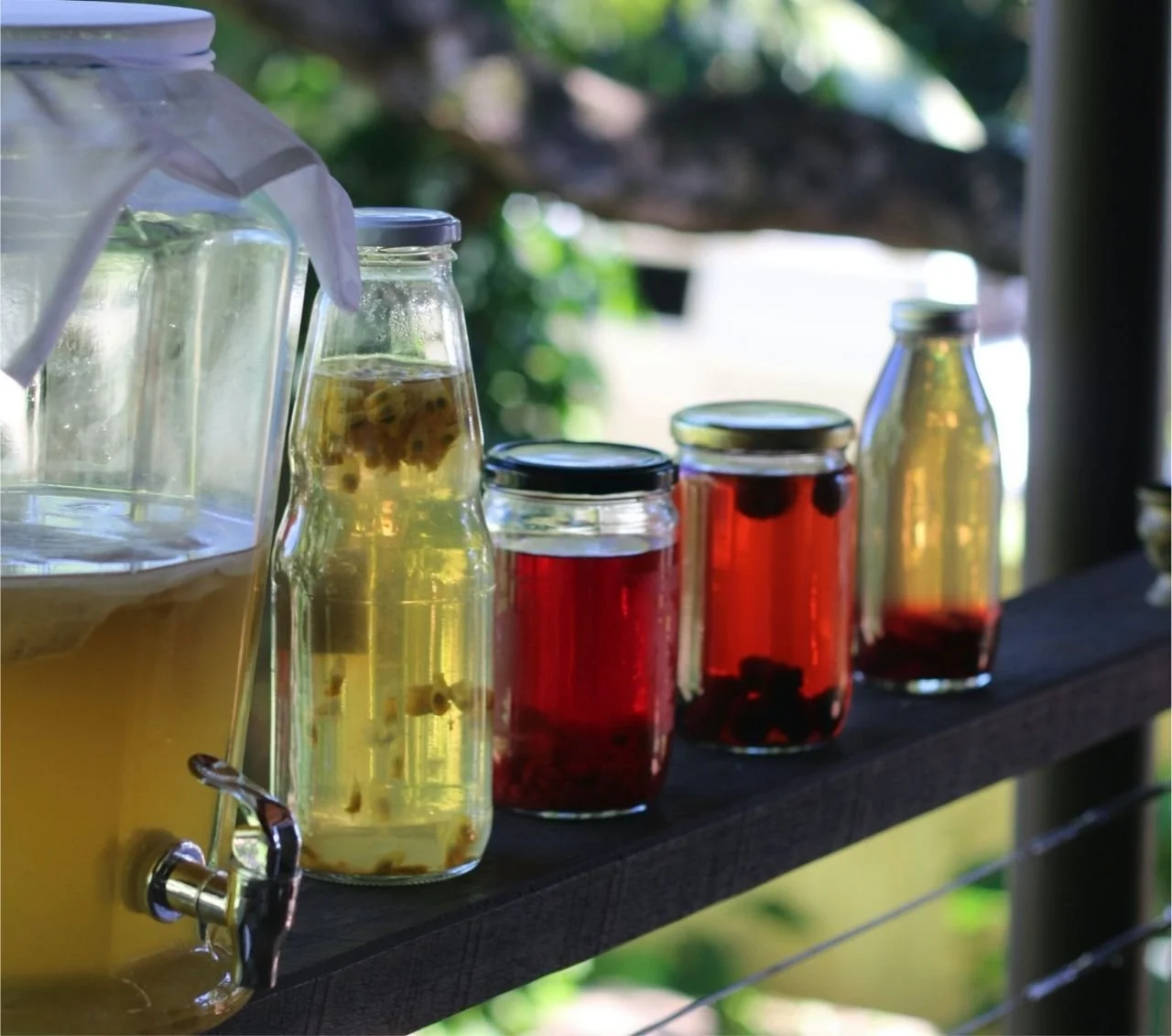Complete Guide to Making Kombucha at Home
A Brief History of Kombucha
Kombucha is believed to have originated in Northeast China (historically referred to as Manchuria) around 220 B.C. It was prized for its detoxifying and energizing properties and was known as the "Tea of Immortality" (Troitino, 2017). Its popularity spread to Russia and Eastern Europe in the early 20th century and has since gained global recognition for its unique taste and health benefits.
Look at this beautiful alien-looking scoby!
What You Need to Get Started
One SCOBY (available online or from another brewer)
Starter tea (1 cup of unflavored kombucha from a previous batch)
Black or green tea (preferably organic, 4–5 tea bags or 3 tablespoons loose leaf)
Sugar (regular white sugar works best, 1 cup per gallon)
Filtered water (avoid chlorinated or distilled water)
A large glass jar (gallon-sized is ideal)
A breathable cloth and rubber band
Bottles for second fermentation (These can be either canning jars or washed store-bought kombucha bottles. Make sure they’re rated for pressure. Canning, beer brewing, kombucha brewing bottles all sustain pressure without exploding.)
How to Make Kombucha: Step by Step
First Fermentation:
Boil 4 cups of filtered water and add 1 cup of sugar. Stir to dissolve.
Add tea and steep for 10-15 minutes.
After 10-15 minutes, remove tea bags or strain leaves.
Add 8-10 cups of cold water to the sweetened tea and let it cool to room temperature.
Pour the cooled tea into a glass jar, leaving a few inches of space at the top.
Add your SCOBY and starter tea.
Cover with a breathable cloth and secure with a rubber band. Mark the date you brewed the tea, so you can judge timing.
Place the jar in a warm, dark place (around 75°F) for 7–14 days.
Second Fermentation (For Flavor and Fizz):
Remove the SCOBY and 1–2 cups of kombucha to use as a starter for your next batch.
Prep your second fermentation bottles. Add flavoring of choice. I use approximately ¼ cup per personal-size kombucha bottle.
Transfer the remaining kombucha to the bottles with flavoring, leaving about 1 inch of headspace.
Seal the bottles tightly with a plastic lid and store them at room temperature for 2–5 days to carbonate. If they’re not sealed tightly, they won’t carbonate.
Some say to burp the bottles daily to release excess pressure, but I’ve never needed to do this.
You can use many types of jars for your fermentation. I’d advise using glass that’s strong enough to handle high-pressure.
Flavor Combinations to Try
Ginger & Lemon
Mixed Berry & Basil
Hibiscus & Mint
Pomegranate & Ginger
Apple & Cinnamon
Why Make Kombucha at Home?
Home-brewing kombucha allows you to:
Control Ingredients: No artificial additives.
Save Money: Store-bought kombucha costs around $3–$5 per bottle, while home brewing is a fraction of the cost.
Experiment with Flavors: You’re not limited to what's on store shelves.
Health Benefits of Kombucha
Kombucha contains probiotics that support gut health, antioxidants that may help reduce inflammation, and polyphenols that contribute to overall well-being (Healthline, 2023). However, it is important to maintain proper brewing methods to prevent contamination (Mayo Clinic, 2023).
Troubleshooting Tips
No Fizz? Try adding more sugar or extending the second fermentation. Alternatively, think about your flavor combinations. More sugary fruit will produce more fizz.
Vinegar Smell? This is normal if it ferments too long—just shorten the brewing time next batch.
Mold on the SCOBY? If you see fuzzy, dry patches, discard everything and start fresh. Brown stringy bits are normal - that is yeast.
Ready to take your plant-based lifestyle to the next level? Discover personalized coaching, workshops, and more on my Experiences page.
References
Healthline. (2023). 8 benefits of kombucha tea. Retrieved May 14, 2025, from https://www.healthline.com/nutrition/8-benefits-of-kombucha-tea
Mayo Clinic. (2023). Kombucha tea: Does it have health benefits? Retrieved May 14, 2025, from https://www.mayoclinic.org/healthy-lifestyle/consumer-health/expert-answers/kombucha-tea/faq-20058126
Troitino, C. (2017). Kombucha 101: Demystifying the past, present, and future of the fermented tea drink. Retrieved May 14, 2025, from https://www.forbes.com/sites/christinatroitino/2017/02/01/kombucha-101-demystifying-the-past-present-and-future-of-the-fermented-tea-drink/


